Introduction to Cream of Mushroom Chicken
Cream of mushroom chicken stands as one of the most beloved comfort food classics in home kitchens across America and beyond. This versatile dish combines tender chicken with the rich, earthy flavors of mushrooms and the velvety texture of cream sauce to create a meal that satisfies both simple weeknight dinner needs and special occasion cravings. Its enduring popularity stems from the perfect balance of accessibility and flavor—a dish that feels simultaneously nostalgic and sophisticated.
What makes cream of mushroom chicken particularly special is its remarkable adaptability. From quick stovetop versions ready in under 30 minutes to slow-cooked variations that develop deep, complex flavors over hours, this dish can be tailored to fit virtually any cooking style, dietary preference, or flavor profile. Whether you're a busy parent looking for a reliable weeknight staple, a culinary enthusiast exploring flavor development techniques, or someone seeking to transform humble ingredients into something extraordinary, cream of mushroom chicken offers endless possibilities.
This comprehensive guide explores everything you need to know about creating exceptional cream of mushroom chicken dishes. We'll cover ingredient selection and preparation techniques, offer multiple cooking methods, suggest creative variations, troubleshoot common issues, and provide expert tips for elevating this classic comfort food to new heights. Whether you're making this dish for the first time or looking to perfect your longtime family recipe, you'll find valuable insights to create the most delicious cream of mushroom chicken possible.

Understanding Cream of Mushroom Chicken
Before diving into recipes and techniques, it's helpful to understand what makes this dish so special and how it has evolved over time.
What Defines Cream of Mushroom Chicken
At its core, cream of mushroom chicken consists of these essential elements:
- Chicken: Typically breast or thigh meat, cooked until tender
- Mushrooms: Fresh mushrooms, cream of mushroom soup, or both
- Creamy sauce: Created from soup, heavy cream, sour cream, or a combination
- Aromatics: Usually onions, garlic, and herbs
- Seasonings: Salt, pepper, and complementary herbs and spices
- Cooking method: Can be baked, simmered on stovetop, or prepared in a slow cooker
The dish is characterized by its creamy texture, savory flavor profile, and comforting quality. The combination of protein, vegetables, and sauce creates a complete meal that pairs well with various side dishes.
History and Evolution
Cream of mushroom chicken has humble yet interesting origins:
- Convenience cooking era: Rose to popularity in the 1950s-60s during the convenience food boom
- Campbell's influence: Largely popularized by Campbell's Soup Company recipes featuring their condensed cream of mushroom soup
- Community cookbooks: Spread through church and community cookbooks as an economical family meal
- Regional variations: Adapted across different regions with local ingredients and preferences
- Modern interpretations: Has evolved from purely convenience-based to include scratch-made gourmet versions
- Global influences: Contemporary versions often incorporate international flavors and techniques
What began as a simple way to stretch a family's food budget has evolved into a versatile dish that appears in both humble home kitchens and upscale restaurants with creative interpretations.
Nutritional Considerations
Understanding the nutritional profile helps in making informed cooking decisions:
- Protein content: Chicken provides high-quality, lean protein
- Mushroom benefits: Contribute B vitamins, selenium, potassium, and immune-supporting compounds
- Calorie range: Can vary widely from 300-700 calories per serving depending on ingredients
- Fat content: Traditional versions with cream and butter can be high in saturated fat
- Sodium considerations: Commercial soup-based versions often contain high sodium
- Modification potential: Easily adapted for various dietary needs with ingredient substitutions
- Whole food value: Homemade versions can incorporate more vegetables and whole ingredients
While traditional cream of mushroom chicken can be rich, modern variations offer numerous ways to create more nutritionally balanced versions without sacrificing flavor.
Essential Ingredients for Perfect Cream of Mushroom Chicken
The quality and preparation of ingredients significantly impact the final result of your dish.
Chicken Selection and Preparation
Choosing the right chicken is foundational to a successful dish:
-
Breast vs. thigh:
- Breasts offer lean, mild flavor and quick cooking time
- Thighs provide richer flavor, more moisture, and greater forgiveness in cooking time
- Bone-in cuts add flavor but increase cooking time
-
Preparation methods:
- Pounding breasts to even thickness ensures uniform cooking
- Cubing creates quicker cooking and more sauce coverage
- Whole pieces offer more presentation appeal
- Brining (30 minutes in saltwater solution) improves moisture retention
-
Pre-cooking considerations:
- Room temperature chicken cooks more evenly
- Patting dry before cooking improves browning
- Light flour dusting helps sauce adherence
- Proper seasoning before browning layers flavor effectively
-
Quantity guidelines:
- Allow 4-6 oz of boneless chicken per person
- Increase to 8-10 oz per person for bone-in cuts
The right chicken preparation creates the foundation for a successful dish.
Mushroom Varieties and Selection
Mushrooms contribute essential flavor and texture to the dish:
-
Common varieties:
- Button mushrooms: Mild flavor, widely available
- Cremini/Baby bellas: Richer flavor than button, affordable upgrade
- Shiitake: Distinctive earthy flavor, meaty texture
- Oyster: Delicate flavor, velvety texture when cooked
- Portobello: Rich, meaty option often used in gourmet versions
-
Fresh vs. canned:
- Fresh offer superior texture and flavor development
- Canned provide convenience but release more water
- Dried mushrooms (rehydrated) add intense flavor concentration
-
Selection tips:
- Look for firm, unblemished caps
- Avoid slimy or shriveled specimens
- Seek closed gills for younger, more tender mushrooms
- Earthy smell indicates freshness (avoid fishy or ammonia scents)
-
Preparation essentials:
- Clean with damp paper towel or brief rinse (never soak)
- Remove tough stems from certain varieties
- Slice uniformly for even cooking
- Consider pre-cooking to remove excess moisture
Experimenting with mushroom varieties and combinations creates distinctive flavor profiles in your dish.
Cream Elements and Alternatives
The creamy component defines the sauce's texture and richness:
-
Traditional options:
- Heavy cream: Creates richest, most stable sauce
- Half-and-half: Lighter alternative that still provides creaminess
- Condensed cream of mushroom soup: Convenient, consistent option
- Sour cream: Adds tanginess and body
- Cream cheese: Creates ultra-thick, rich texture
-
Healthier alternatives:
- Evaporated milk: Provides creaminess with less fat
- Greek yogurt: Adds protein and tanginess
- Cashew cream: Plant-based alternative with natural richness
- Coconut milk: Dairy-free option with distinct flavor
- Pureed cauliflower: Low-calorie thickener for lightened versions
-
Stabilizing techniques:
- Tempering (gradually warming) prevents curdling
- Adding flour or cornstarch creates more stable emulsions
- Avoiding high heat after adding cream prevents separation
- Adding acid (like lemon) at the end prevents curdling
The cream component determines both the richness and stability of your finished dish.
Supporting Ingredients and Flavor Boosters
These elements elevate the dish from good to exceptional:
-
Aromatics:
- Onions: Yellow, white, or shallots provide aromatic base
- Garlic: Fresh or granulated adds depth
- Celery: Adds subtle complexity to sauce base
- Carrots: Sweetness balances mushroom earthiness
-
Herbs and seasonings:
- Thyme: Classic herb pairing with mushrooms
- Rosemary: Stronger, piney complement
- Tarragon: Distinctive anise notes for French influence
- Bay leaf: Subtle background complexity
- Paprika: Adds color and mild warmth
-
Flavor enhancers:
- White wine: Adds acidity and complexity
- Dijon mustard: Tanginess and emulsification
- Worcestershire sauce: Umami depth
- Soy sauce: Savory enhancement
- Parmesan cheese: Nutty depth and thickening
-
Textural elements:
- Bacon or pancetta: Adds smoky richness
- Breadcrumbs: Provides contrasting texture as topping
- Nuts: Almonds or pine nuts add crunch
- Additional vegetables: Peas, spinach, or asparagus add color and nutrition
These supporting ingredients allow for personalization and elevate the basic recipe.
Classic Cream of Mushroom Chicken Recipe
This foundational recipe serves as a starting point for countless variations.
Ingredients for Basic Stovetop Version
A straightforward approach that delivers reliable results:
- 1.5 lbs boneless, skinless chicken breasts or thighs, cut into pieces
- 8 oz fresh mushrooms, sliced (cremini or button)
- 1 medium onion, finely diced
- 2-3 garlic cloves, minced
- 2 tablespoons butter
- 1 tablespoon olive oil
- 1 can (10.5 oz) condensed cream of mushroom soup
- 1/2 cup chicken broth
- 1/4 cup heavy cream
- 1 teaspoon dried thyme (or 1 tablespoon fresh)
- Salt and freshly ground black pepper to taste
- 2 tablespoons fresh parsley, chopped (for garnish)
- Optional: 1/4 cup white wine for deglazing
This ingredient list creates a classic version that can be easily modified.
Step-by-Step Preparation
Follow these steps for consistent results:
-
Prepare the chicken:
- Pat chicken pieces dry with paper towels
- Season generously with salt and pepper
- Optional: lightly dust with flour for better browning
-
Sear the chicken:
- Heat olive oil in a large skillet over medium-high heat
- Add chicken pieces without overcrowding
- Cook 3-4 minutes per side until golden brown (doesn't need to be cooked through)
- Remove chicken to a plate and set aside
-
Sauté aromatics and mushrooms:
- In the same pan, add butter
- Add onions and cook until translucent, about 3-4 minutes
- Add garlic and cook for 30 seconds until fragrant
- Add mushrooms and cook until they release their moisture and begin to brown, 5-7 minutes
- Optional: Add white wine to deglaze, scraping up browned bits
-
Create the sauce:
- Add cream of mushroom soup and chicken broth to the pan
- Stir to combine and bring to a gentle simmer
- Add thyme and stir to incorporate
-
Complete the dish:
- Return chicken to the pan, nestling pieces into the sauce
- Reduce heat to low and cover, simmering for 10-15 minutes until chicken is cooked through
- Stir in heavy cream during the last 5 minutes of cooking
- Adjust seasoning with salt and pepper to taste
-
Finish and serve:
- Garnish with fresh parsley
- Serve over rice, pasta, or with crusty bread for dipping
This method creates a balanced dish with properly cooked chicken and a flavorful sauce.
Key Techniques for Success
These critical techniques ensure excellent results:
- Proper browning: Don't skip searing the chicken—this develops deep flavor through Maillard reaction
- Don't overcrowd the pan: Cook in batches if necessary to ensure proper browning
- Mushroom cooking: Allow mushrooms to release and then reabsorb their moisture for best flavor
- Deglazing: Use broth or wine to scrape up flavorful browned bits from the pan bottom
- Gentle temperature: Once cream is added, keep temperature low to prevent curdling
- Resting period: Allowing the finished dish to rest for 5-10 minutes allows flavors to meld
- Taste adjustment: Final seasoning should be done at the end when flavors have developed
Mastering these techniques elevates your dish from good to exceptional.

Delicious Variations of Cream of Mushroom Chicken
The basic recipe serves as a canvas for countless creative variations.
Slow Cooker Cream of Mushroom Chicken
Perfect for busy days when you need dinner waiting for you:
-
Preparation modifications:
- Searing chicken beforehand is optional but adds flavor
- Layer chicken on bottom of slow cooker
- Mix soup, broth, and seasonings separately before adding
- Add mushrooms on top (they'll release moisture during cooking)
-
Cooking guidelines:
- Low setting: 6-8 hours
- High setting: 3-4 hours
- Add cream or dairy in final 30 minutes
-
Texture considerations:
- Sauce may be thinner due to moisture release
- Can thicken with cornstarch slurry at end if desired
- Chicken will be very tender, almost shredded
-
Flavor enhancements:
- Adding sun-dried tomatoes creates Mediterranean flair
- Ranch seasoning packet creates zesty variation
- Cream cheese instead of cream creates richer result
Slow cooker versions excel in convenience and developing tender texture.
Oven-Baked Casserole Style
This method creates a complete one-dish meal:
-
Preparation approach:
- Layer partially cooked chicken in baking dish
- Combine sauce ingredients and pour over
- Add uncooked rice or par-boiled pasta if desired
- Top with breadcrumbs and/or cheese
-
Baking guidelines:
- 350°F (175°C) for 30-40 minutes covered
- Uncover for final 10 minutes to brown topping
- Internal temperature should reach 165°F (74°C)
-
Popular additions:
- Wild rice creates hearty texture
- Broccoli adds color and nutrition
- Water chestnuts provide unexpected crunch
- French fried onions create classic topping
-
Make-ahead options:
- Can be assembled up to 24 hours before baking
- Freezes well before baking for up to 3 months
- May need additional liquid if using rice
Casserole versions excel in make-ahead convenience and complete meal creation.
Gourmet Scratch-Made Version
Elevate the dish for special occasions:
-
Upgraded ingredients:
- Use chicken stock instead of broth
- Incorporate wild mushroom blend (shiitake, oyster, chanterelle)
- Add splash of sherry or Marsala wine
- Use fresh herbs rather than dried
-
Technique enhancements:
- Create true béchamel sauce instead of using condensed soup
- Use bone-in, skin-on chicken pieces for more flavor
- Finish with truffle oil or truffle salt
- Consider sous vide chicken for perfect texture
-
Presentation upgrades:
- Serve in individual crocks or ramekins
- Garnish with microgreens or edible flowers
- Use decorative herb sprigs
- Consider puff pastry topping for elegant presentation
Gourmet versions focus on flavor development, ingredient quality, and elegant presentation.
Healthier Adaptations
Modified versions that maintain flavor while improving nutritional profile:
-
Lightened base options:
- Use milk thickened with roux instead of cream
- Greek yogurt provides protein and creaminess
- Pureed white beans add thickness and protein
- Cauliflower cream sauce offers vegetable-based alternative
-
Increased vegetable content:
- Double or triple mushroom quantity
- Add spinach, kale, or other greens
- Incorporate bell peppers, zucchini, or asparagus
- Use spiralized vegetables instead of pasta
-
Alternative cooking methods:
- Air fryer for chicken reduces oil while maintaining crispness
- Instant Pot pressure cooking retains flavor with less fat
- Parchment paper packets for oven steaming
These modifications maintain the comfort food appeal while improving nutritional value.
Perfect Pairings and Serving Suggestions
Complement your cream of mushroom chicken with appropriate side dishes and beverages.
Classic Side Dish Pairings
Traditional accompaniments that work well with the dish:
-
Starchy sides:
- Mashed potatoes absorb sauce beautifully
- Egg noodles provide traditional pairing
- Rice (white, brown, or wild) offers gluten-free option
- Crusty bread for sauce-dipping
-
Vegetable accompaniments:
- Green beans almondine provides texture contrast
- Roasted Brussels sprouts add caramelized notes
- Simple garden salad offers fresh counterpoint
- Glazed carrots add color and sweetness
-
Timing considerations:
- Prepare sides that finish with main dish
- Consider oven space if baking multiple items
- Plan for holding time if needed
The right side dishes complete the meal and complement the creamy sauce.
Wine and Beverage Pairings
The right drink enhances the dining experience:
-
Wine selections:
- Chardonnay: Buttery notes complement creamy sauce
- Pinot Grigio: Brightness cuts through richness
- Pinot Noir: Light red works with mushroom earthiness
- Vermentino: Crisp alternative to more common whites
-
Non-alcoholic options:
- Sparkling water with lemon brightens palate
- Unsweetened iced tea provides tannin balance
- Apple cider offers fall-appropriate pairing
- Mushroom tea for mushroom enthusiasts
-
Cocktail suggestions:
- Dry martini complements savory notes
- Bourbon old fashioned works with earthy elements
- Moscow mule provides ginger contrast
Thoughtful beverage pairings elevate the overall meal experience.
Presentation Ideas
Visual appeal enhances enjoyment:
-
Plating approaches:
- Shallow bowls showcase sauce appropriately
- Family-style serving encourages sharing
- Individual portions allow for personalization
- Garnish with herb sprigs, lemon zest, or edible flowers
-
Color considerations:
- Add colorful elements to predominantly beige dish
- Fresh herbs provide green accent
- Roasted red peppers add vibrant color
- Black pepper visible in sauce adds visual interest
-
Textural elements:
- Crispy fried onions or shallots add contrasting texture
- Toasted nuts provide elegant crunch
- Breadcrumb topping creates textural interest
- Microgreens add delicate visual element
Thoughtful presentation transforms a humble dish into an impressive meal.
Troubleshooting Common Issues
Even experienced cooks encounter challenges with cream of mushroom chicken.
Preventing and Fixing Sauce Problems
Address common sauce issues with these solutions:
-
Curdled or separated sauce:
- Prevention: Keep heat low after adding dairy
- Fix: Remove from heat and whisk in cold butter
- Alternative fix: Strain and remake sauce component
-
Too thin or watery:
- Prevention: Pre-cook mushrooms to release moisture
- Fix: Create cornstarch slurry (1 tbsp each cornstarch and cold water)
- Alternative fix: Reduce sauce by simmering uncovered
-
Too thick or gloppy:
- Prevention: Be cautious with thickeners
- Fix: Gradually whisk in chicken broth or milk
- Alternative fix: Add splash of white wine for thinning with flavor
-
Bland or flat taste:
- Prevention: Season in layers throughout cooking
- Fix: Add acid (lemon juice, white wine vinegar)
- Alternative fix: Umami boosters (soy sauce, Worcestershire)
Understanding these fixes helps salvage dishes that aren't turning out as expected.
Chicken Texture Issues
Ensure perfectly cooked chicken every time:
-
Dry or tough chicken:
- Prevention: Don't overcook; use meat thermometer (165°F/74°C)
- Fix: Slice thinly and return to sauce to absorb moisture
- Alternative: Switch to thigh meat for more forgiveness
-
Undercooked chicken:
- Prevention: Ensure even sizing of pieces
- Fix: Continue cooking in sauce until done
- Safety note: Always verify 165°F (74°C) internal temperature
-
Rubbery texture:
- Prevention: Don't overcrowd pan during searing
- Fix: Extended simmering in sauce can help
- Note: Some texture issues can't be fully remedied
Proper chicken cooking technique forms the foundation of a successful dish.
Storage and Reheating Guidelines
Maximize quality when saving leftovers:
-
Refrigeration:
- Cool completely before refrigerating
- Store in airtight container for 3-4 days maximum
- Keep sauce and chicken together for moisture retention
-
Freezing options:
- Best frozen before adding dairy components
- Use within 2-3 months for optimal quality
- Thaw in refrigerator overnight before reheating
-
Reheating methods:
- Stovetop: Low heat with occasional stirring, add splash of broth
- Microwave: 50% power in intervals, stirring between
- Oven: Cover with foil, 325°F (165°C) until heated through
-
Quality preservation:
- Add fresh herbs after reheating
- Consider fresh side dishes rather than reheating
- May need additional liquid when reheating
Proper storage and reheating maintains food safety and maximizes leftover quality.
Frequently Asked Questions About Cream of Mushroom Chicken
Can I make cream of mushroom chicken without canned soup?
Absolutely! Many home cooks prefer making cream of mushroom chicken without canned soup for better control over ingredients, reduced sodium, and more complex flavor. To replace one can (10.5 oz) of condensed cream of mushroom soup in recipes, you can make a scratch version with these simple steps:
- Sauté 8 oz of finely chopped fresh mushrooms in 2 tablespoons of butter until golden brown and moisture has evaporated (about 8-10 minutes).
- Add 2 tablespoons of flour and cook for 1-2 minutes, stirring constantly to create a roux.
- Gradually whisk in 1 cup of chicken broth and 1/2 cup of whole milk or cream.
- Simmer gently for 5-7 minutes until thickened to a condensed soup consistency.
- Season with salt, pepper, and a pinch of dried thyme.
This homemade version works as a direct replacement in any recipe calling for condensed soup. The benefits include fresher flavor, customizable thickness, adjustable seasonings, and the absence of preservatives or additives. Many cooks find that once they switch to homemade, the depth of flavor makes it difficult to return to the canned version, though it does require about 15 extra minutes of preparation time.
What are the best mushrooms to use for cream of mushroom chicken?
The best mushrooms for cream of mushroom chicken depend on your flavor preferences, budget, and availability. For maximum flavor impact, consider using a blend of mushroom varieties rather than a single type. Here's a breakdown of excellent options:
For everyday cooking:
- Cremini (baby bella) mushrooms offer more flavor than white button mushrooms while remaining affordable and widely available
- White button mushrooms work well when a milder mushroom flavor is desired
- Pre-sliced mushrooms sacrifice some freshness but save considerable preparation time
For special occasions or gourmet versions:
- Shiitake mushrooms (stems removed) provide rich, earthy flavor and meaty texture
- Oyster mushrooms offer delicate texture and subtle flavor
- Chanterelles bring a fruity, apricot-like note that pairs beautifully with cream
- Porcini mushrooms (often used dried and rehydrated) contribute intense umami flavor
A particularly successful combination is 50% cremini for body and value, 25% shiitake for depth, and 25% oyster mushrooms for texture variation. For maximum flavor, ensure you're cooking mushrooms properly: sauté them in a hot pan until they release their moisture, then continue cooking until that moisture evaporates and they begin to brown. This concentrates their flavor and prevents a watery sauce. Remember that mushrooms shrink considerably during cooking, so start with more than you think you'll need.
How can I make a dairy-free version of cream of mushroom chicken?
Creating a delicious dairy-free cream of mushroom chicken is entirely possible with the right substitutions. The key is finding alternatives that provide similar creaminess and richness without dairy products. Here are the most successful approaches:
For the creamy element:
- Full-fat coconut milk offers natural richness and subtle sweetness
- Cashew cream (blended soaked cashews with water) provides neutral creaminess
- Unsweetened almond or oat milk thickened with dairy-free roux
- Silken tofu blended with chicken broth creates protein-rich creaminess
For richness usually provided by butter:
- Olive oil works well for sautéing mushrooms and aromatics
- Vegan butter substitutes can be used for closer flavor profile
- Refined coconut oil provides richness without strong coconut flavor
Additional flavor boosters to compensate for dairy's richness:
- Nutritional yeast adds cheesy, savory notes
- Miso paste contributes umami depth
- Mushroom powder intensifies the mushroom flavor
- Additional herbs like thyme and tarragon enhance complexity
The most successful dairy-free approach combines a higher proportion of mushrooms (for more flavor and texture), coconut milk or cashew cream as the creamy base, and additional umami boosters like nutritional yeast or miso. When making the sauce, be sure to let it reduce slightly more than you would a dairy version, as plant-based alternatives sometimes need more concentration to achieve similar richness. The finished dish should be creamy, savory, and satisfying without any noticeable compromise in flavor or texture.
What's the best way to ensure chicken stays tender in cream of mushroom recipes?
Ensuring tender chicken in cream of mushroom recipes comes down to several key techniques that prevent overcooking and promote moisture retention. The single most important factor is avoiding overcooking, as chicken breast in particular can quickly become dry and tough when cooked beyond 165°F (74°C).
For boneless chicken breasts:
- Pound to even thickness (about 1/2 inch) before cooking to ensure uniform cooking
- Consider brining (soaking in saltwater solution) for 30 minutes before cooking
- Sear quickly over higher heat just until golden, then finish cooking gently in the sauce
- Use a meat thermometer and remove from heat at 160°F (71°C) as carryover cooking will reach safe temperature
- Allow to rest 5-10 minutes before serving or cutting
For boneless chicken thighs:
- Naturally more forgiving due to higher fat content
- Trim excess fat but leave some for moisture and flavor
- Cook to 170-175°F (77-79°C) for better texture with this cut
- Longer cooking actually improves tenderness with thighs
For bone-in pieces:
- Allow longer cooking time but benefit from added flavor
- Position in sauce so that some meat remains above liquid for textural contrast
- Consider starting skin-side down for browning, then removing skin before adding to sauce
Regardless of cut, the cooking method also impacts tenderness:
- Stovetop versions should maintain a gentle simmer, never a boil
- Slow cooker versions benefit from low setting rather than high
- Baked versions should be tightly covered to retain moisture
Following these guidelines should result in chicken that remains tender, juicy, and flavorful in your cream of mushroom recipes, regardless of which cut you choose to use.
Conclusion
Cream of mushroom chicken has earned its place as a beloved comfort food classic for good reason. Its combination of tender protein, earthy mushrooms, and rich, velvety sauce creates a deeply satisfying meal that appeals to both casual and sophisticated palates. The dish's remarkable versatility allows it to evolve from simple weeknight dinner to elegant entertaining option with just a few thoughtful modifications.
What makes this dish particularly valuable in any cook's repertoire is its adaptability. Whether you're creating a quick stovetop version with condensed soup, crafting a scratch-made gourmet interpretation, or assembling a make-ahead casserole for busy days, cream of mushroom chicken delivers reliable satisfaction. The basic formula can be modified to accommodate dietary preferences, ingredient availability, and seasonal variations while maintaining its essential comfort food character.
As you experiment with different variations of cream of mushroom chicken, consider it a canvas for your culinary creativity rather than a rigid recipe. Try different mushroom varieties, explore herb and spice combinations, experiment with cooking methods, and discover the version that becomes your signature dish. Whether served over buttery mashed potatoes, tangled with egg noodles, or alongside crusty bread, cream of mushroom chicken continues to represent the best of home cooking—simple ingredients transformed through thoughtful preparation into something greater than the sum of its parts.

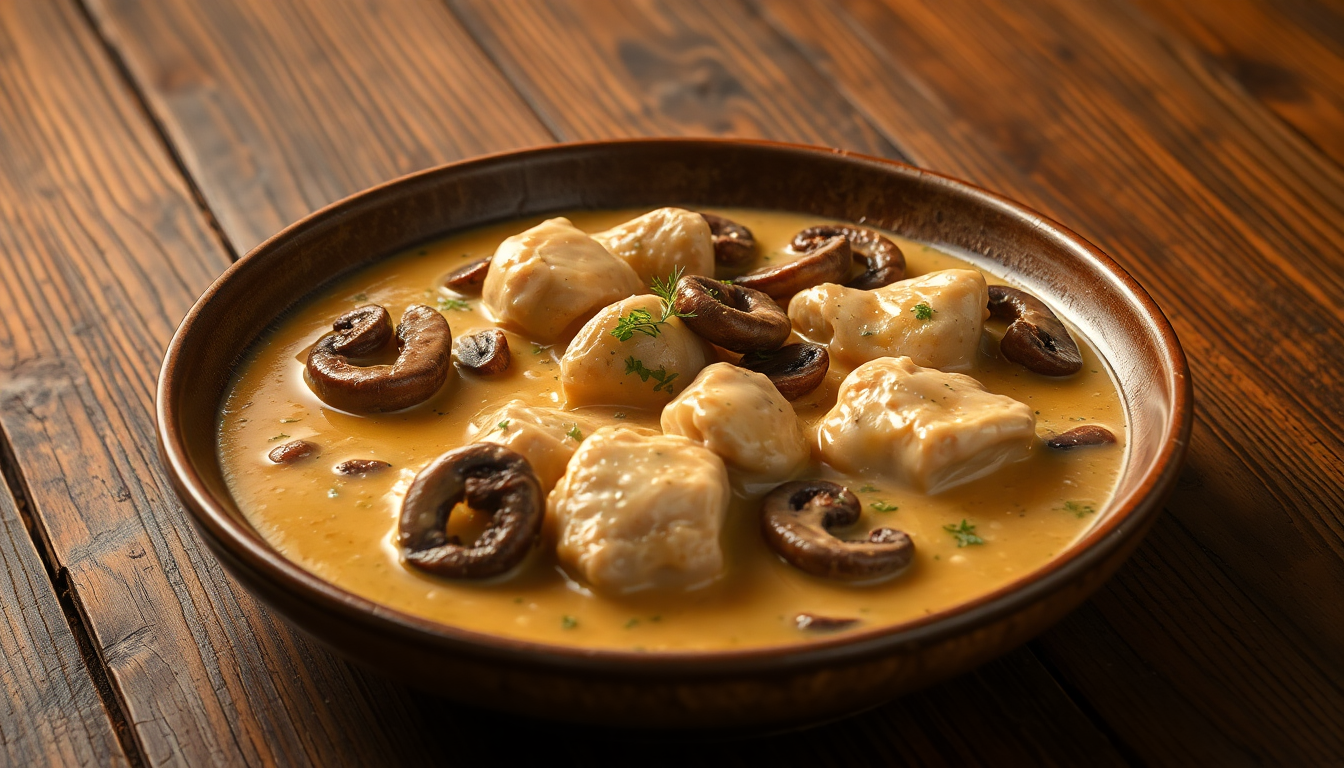


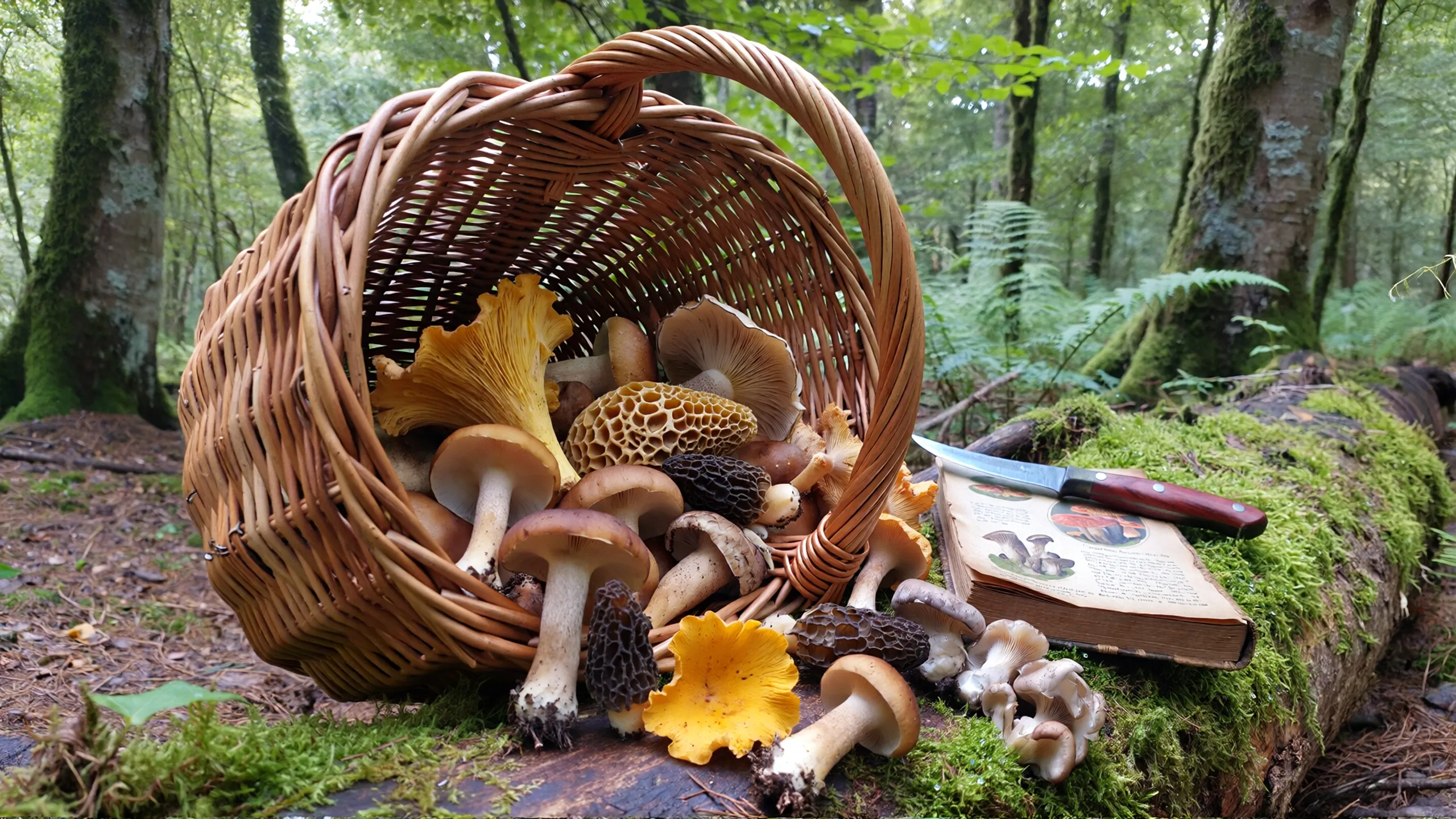

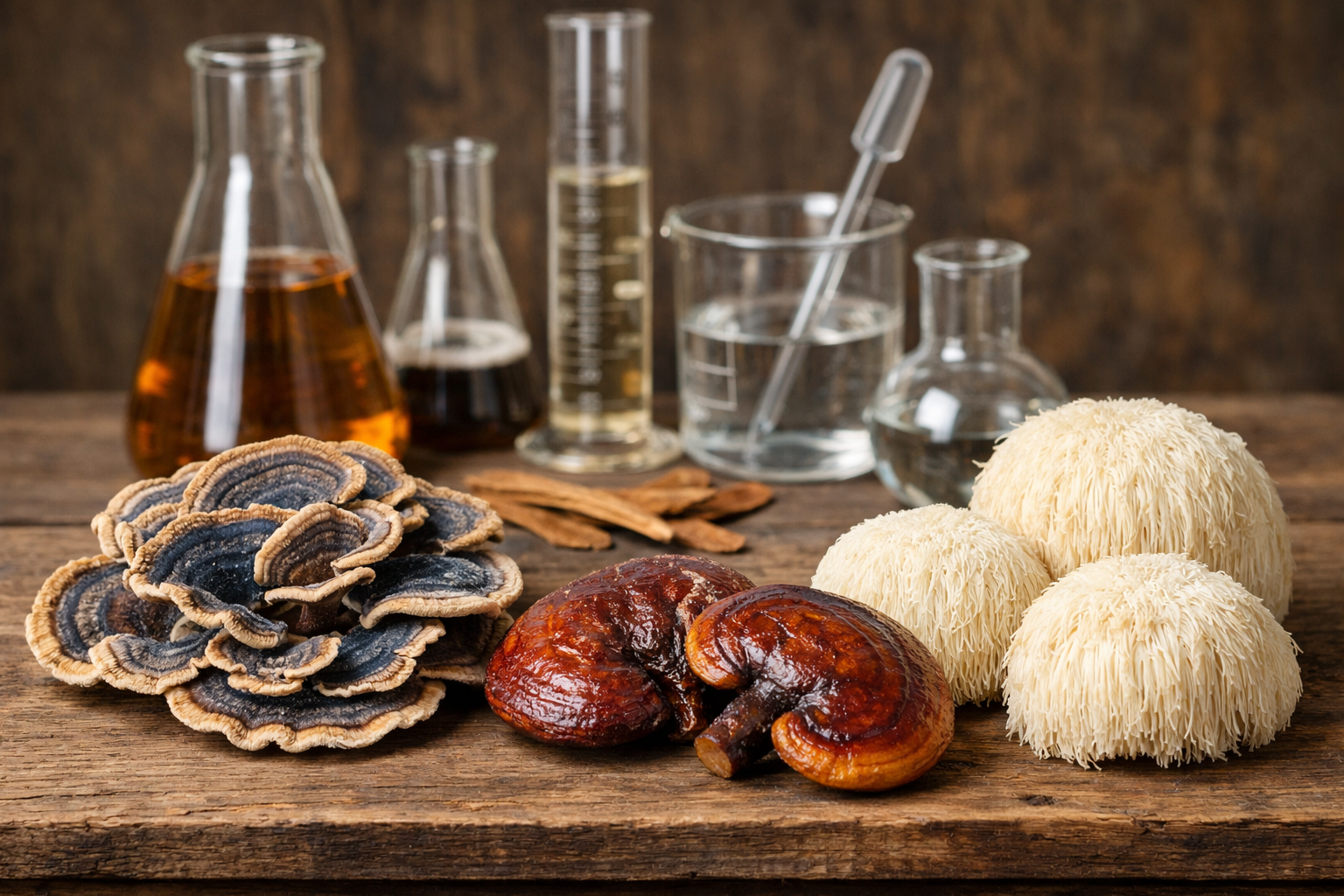
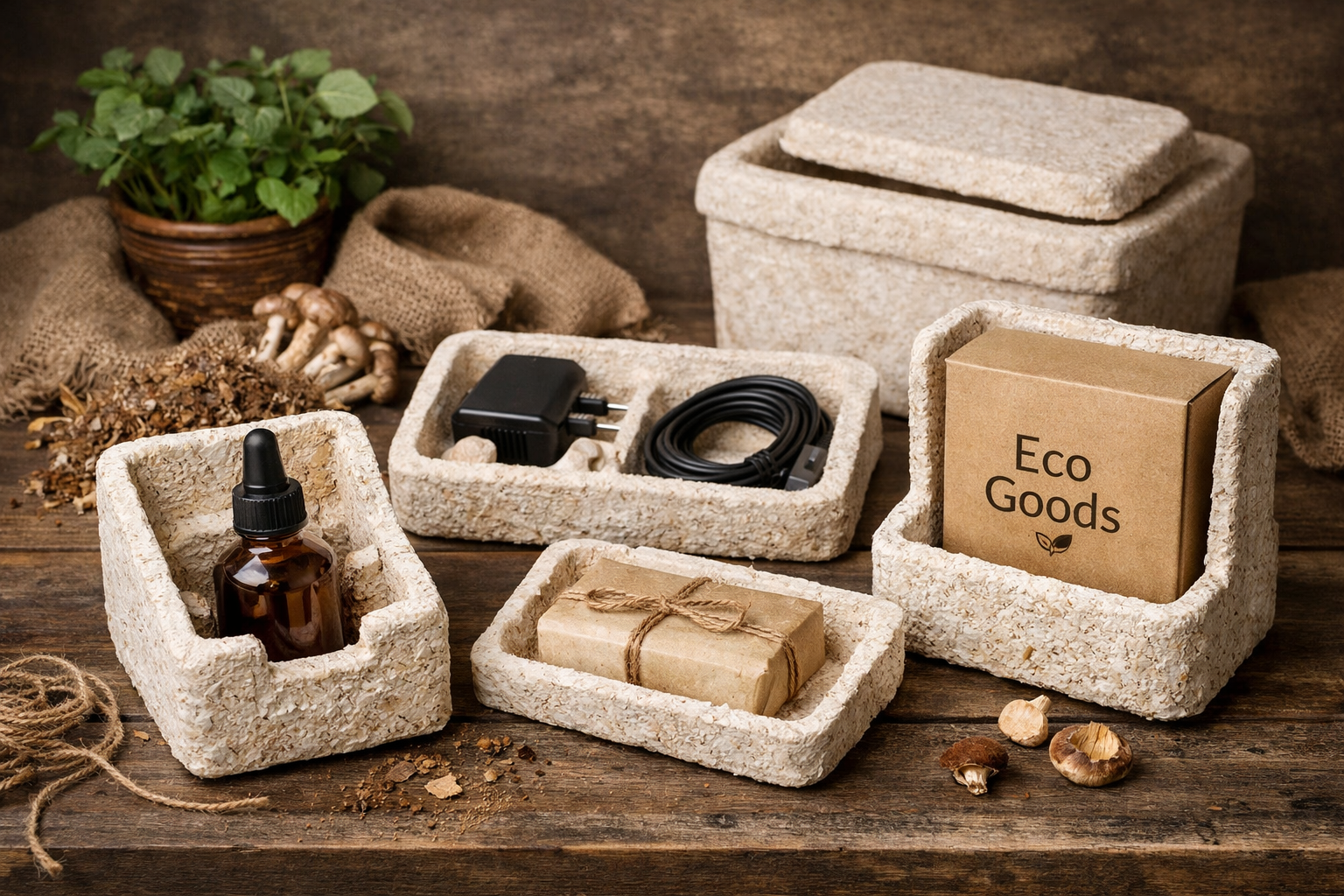

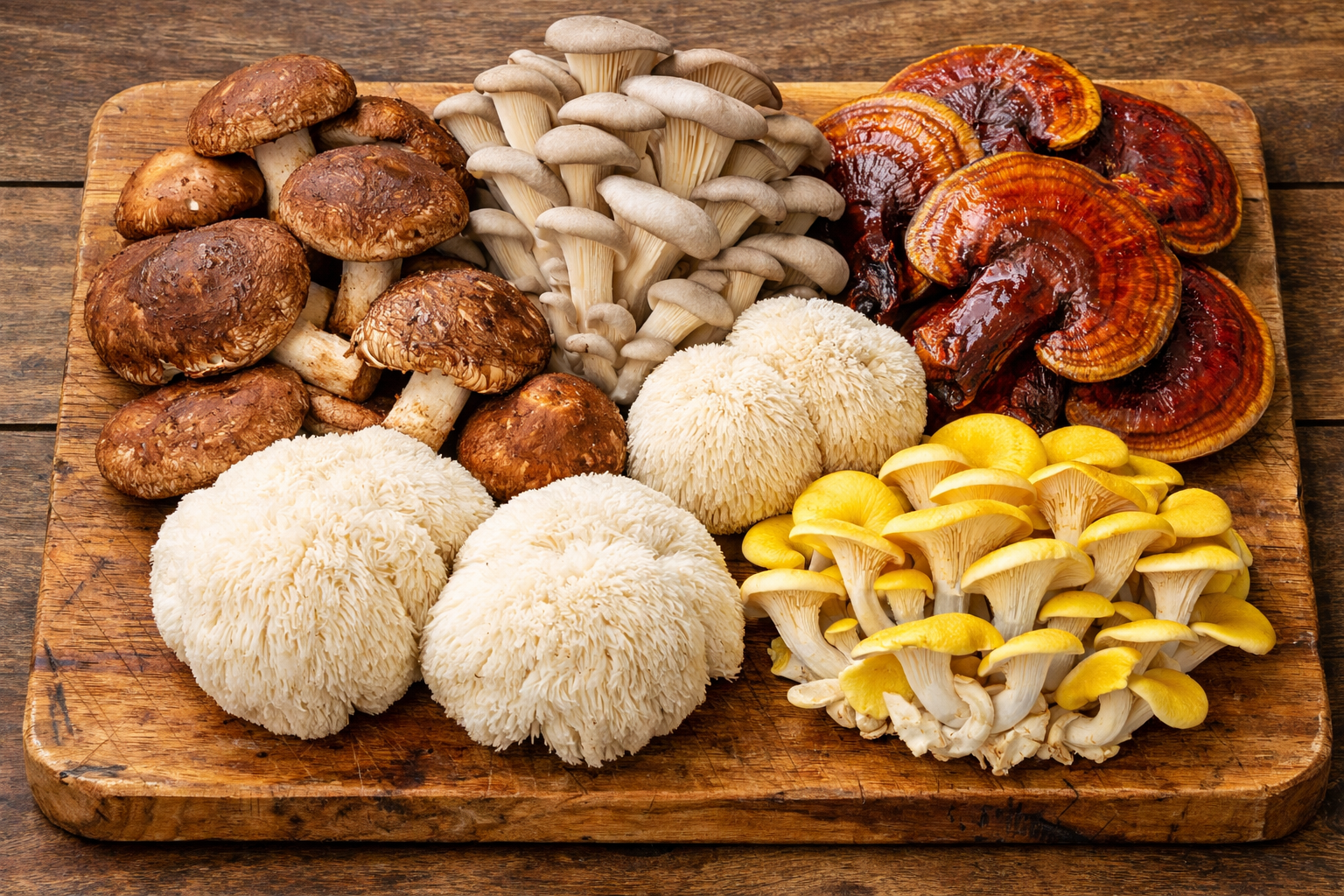
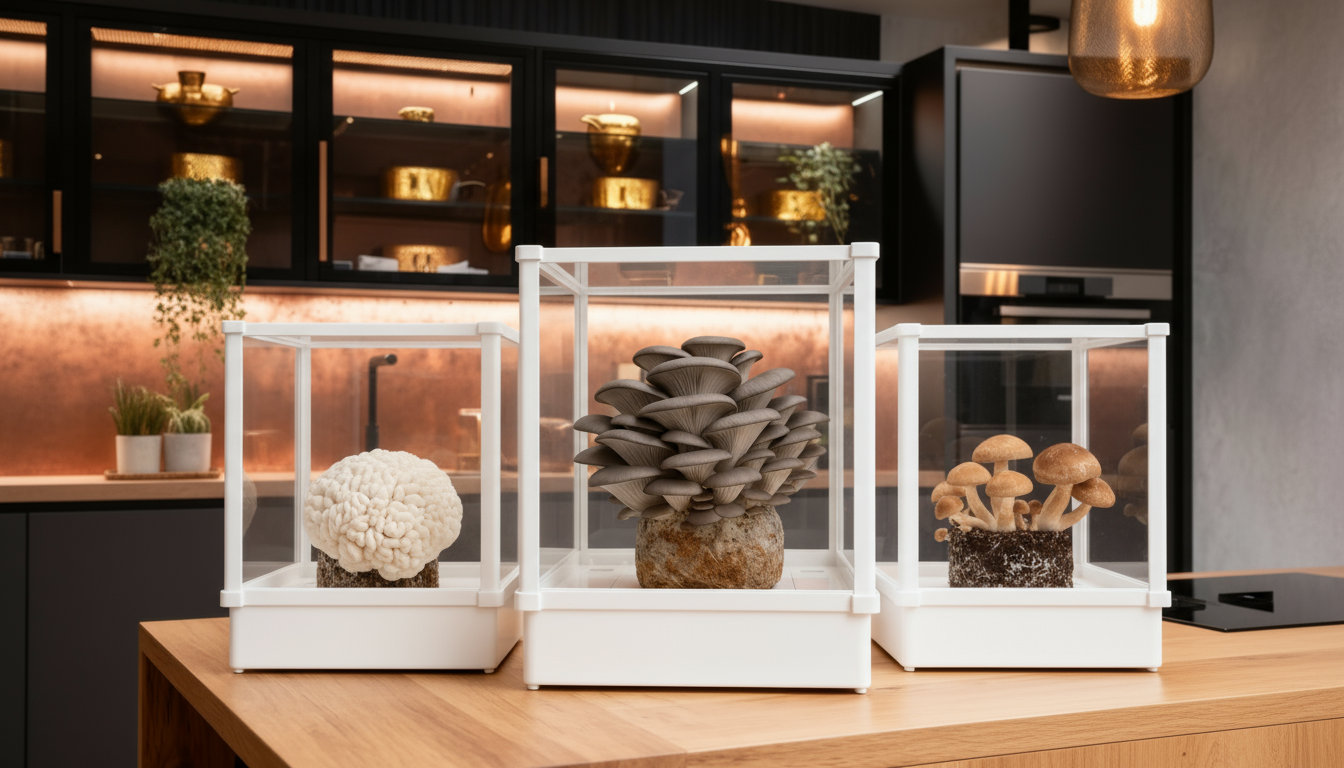
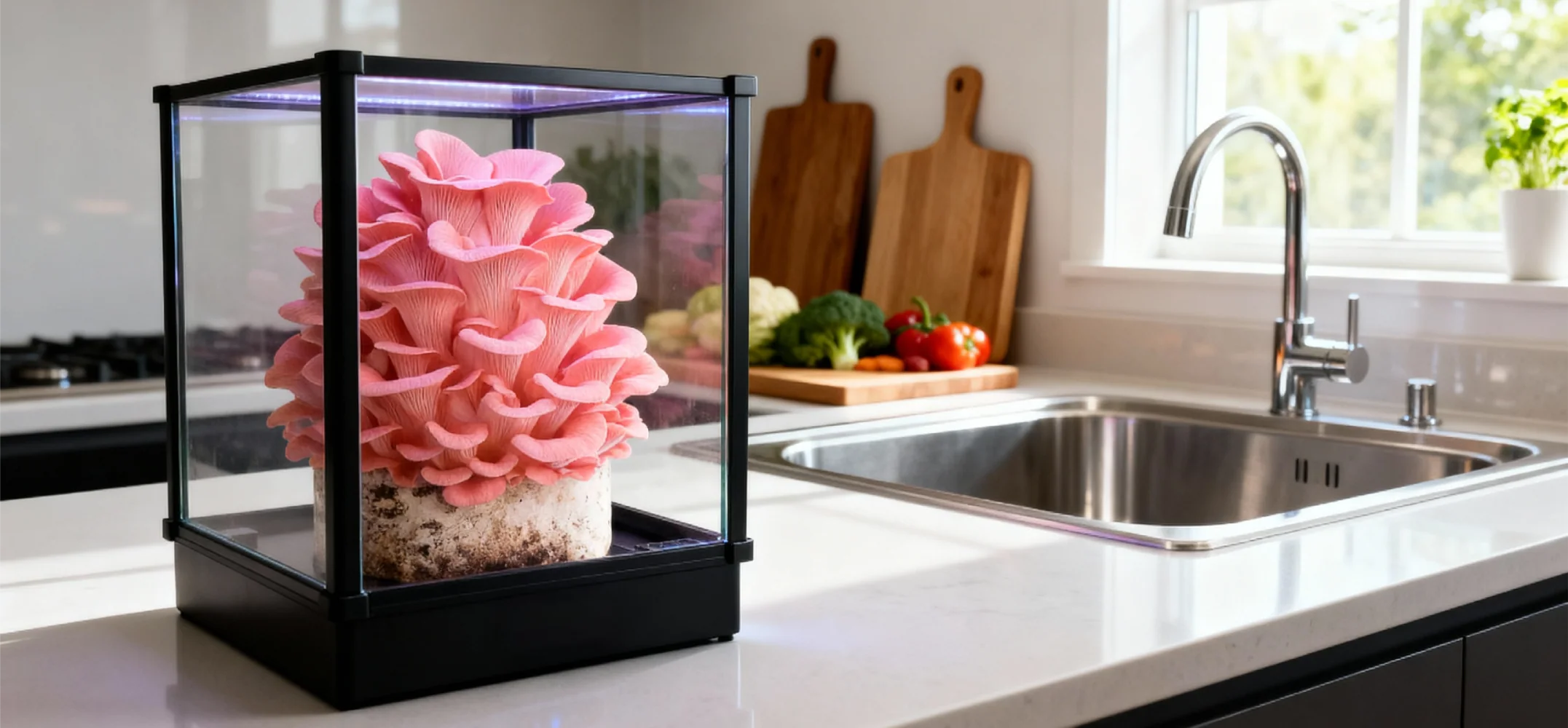

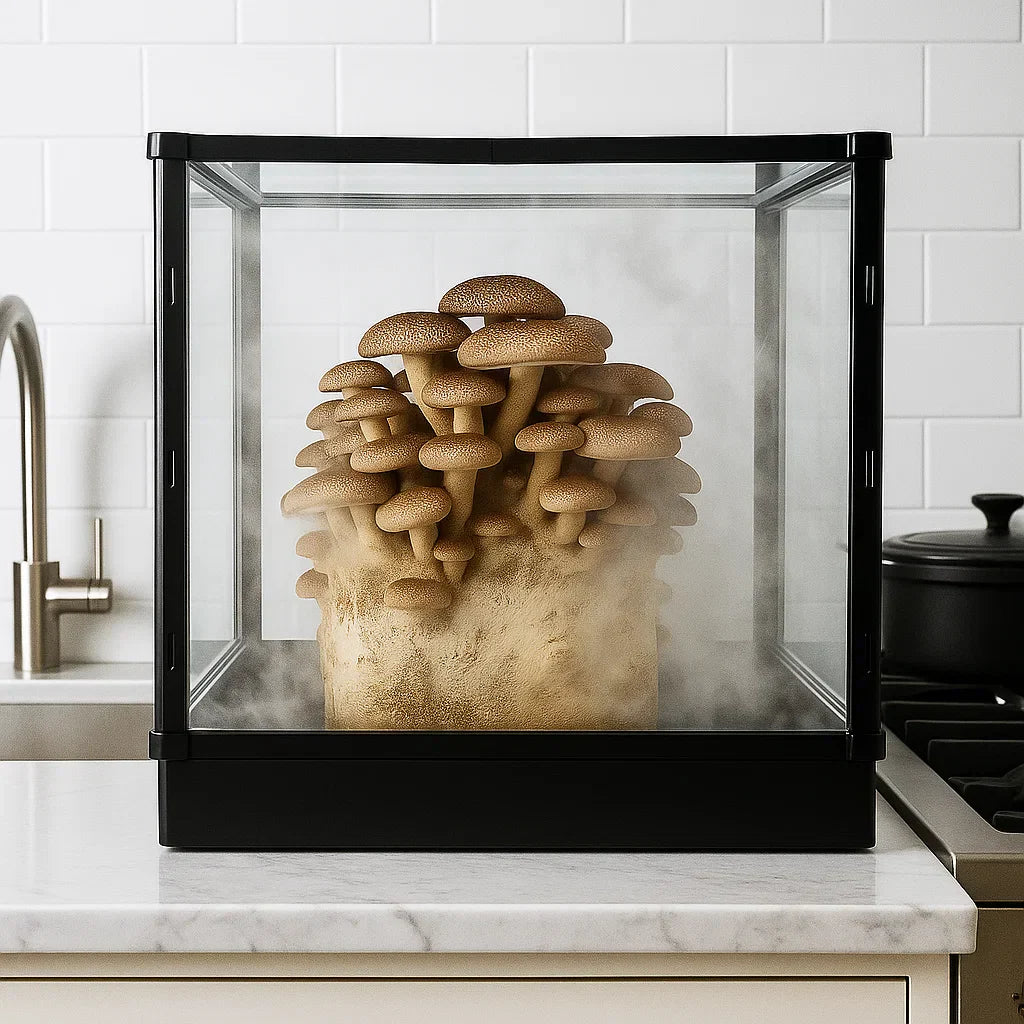
Share:
Baby Bella Mushrooms - Flavorful and Nutritious Delight
Oyster Mushroom - Delicious, Nutritious, and Versatile